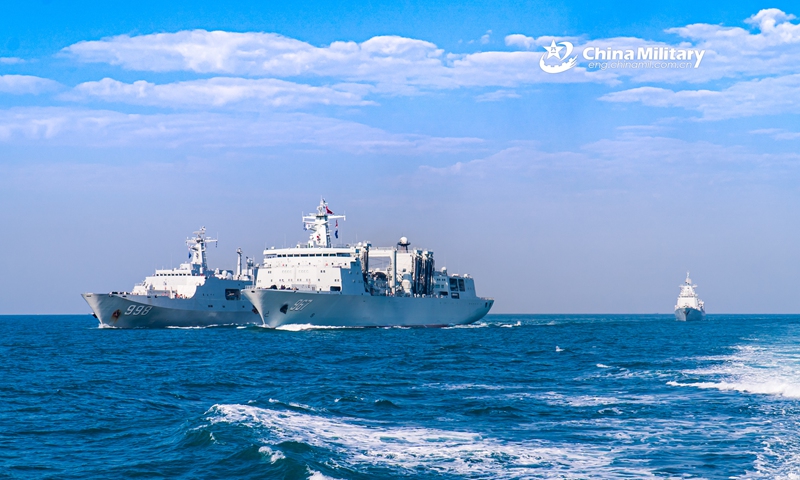
The comprehensive supply ship Chaganhu (Hull 967) executes alongside replenishment-at-sea with the amphibious transport dock landing ship Kunlunshan (Hull 998) during a maritime training exercise in waters of the South China Sea on January 14, 2021. Photo:China Military
Recent coverage by Australian media on the legal presence of surveillance ships of the Chinese People's Liberation Army (PLA) Navy near ongoing US-Australian military exercises has been unreasonable magnified, particularly when Western countries like the US do the same on China, Chinese experts said on Sunday.
China has dispatched two Type 815 auxiliary general intelligence ships to locations near Australia amid the Talisman Sabre 2021 large-scale military exercises involving Australian and US forces, Australian news website abc.net.au reported on Sunday.
The Chinese military had not made any announcement on this mission as of Sunday evening.
For the past two versions of the Talisman Sabre exercises in 2019 and 2017, China deployed one surveillance ship to study how US forces interact with their Australian counterparts but this was the first time a second surveillance vessel has been sent, according to the Australian news report.
Both PLA ships are expected to remain outside Australian territorial waters, with one sailing through the Torres Strait toward Queensland and the other approaching from the Solomon Sea, around Papua New Guinea, the report said, adding that the PLA Navy's activity is consistent with freedom of navigation laws under the UN Convention on the Law of the Sea.
It is unreasonable to exaggerate the legal presence of the Chinese ships as threats when Western countries like the US are frequently conducting close-in reconnaissance activities on China from both sea and air, which are much riskier, a Chinese military expert told the Global Times on Sunday.
The US deployed at least one surveillance ship to the South China Sea in at least 161 days in the first six months of 2021 to attempt to monitor activities of Chinese submarine in the region and provide anti-submarine intelligence support, the South China Sea Strategic Situation Probing Initiative (SCSPI), a Beijing-based think tank, said
in a report released last week.
US naval surveillance activities were accompanied by aerial monitoring with more than 2,000 US spy aircrafts conducting close-in reconnaissance on China each year, the SCSPI said.
US warships also frequently trespassed into Chinese territorial waters in the Xisha and Nansha islands and US spy planes often change their identification codes to look like civilian aircrafts when conducting close-in reconnaissance operations, observers said.
Western countries should get used to China's legal maritime activities as the PLA Navy continues to develop, the expert said.




